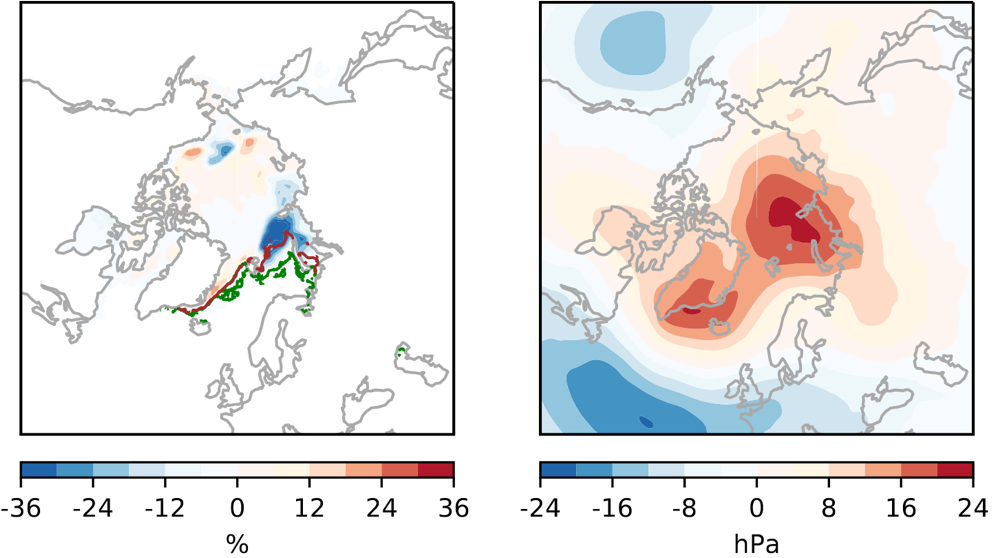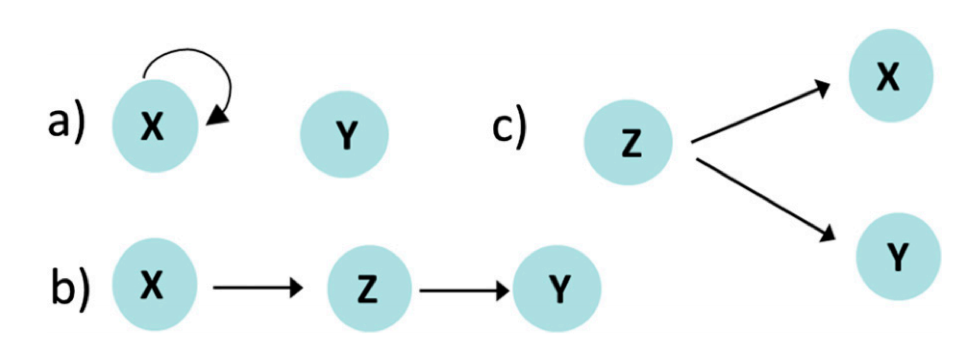Written by Peter Yu Feng Siew, PhD candidate at the Bjerknes Centre and the Geophysical Institute at the University of Bergen
We use Causal Effect Networks (CEN) to investigate links between Arctic sea ice extent and the North Atlantic Oscillation. The results show that a pathway is apparent in the period of 1979 to 2018, but the pathway is not a systematic feature.
Arctic sea ice extent has shrunk notably over the last decades due to climate change. At the same time, we have experienced a number of extreme winters, making some scientists wonder whether changing sea ice might influence midlatitude weather and climate. For example, the low sea ice conditions in autumn 2009 were followed by an atmospheric circulation pattern that caused unusually cold and snowy conditions over northwest Europe in winter 2010, shown in the figure below.

This large-scale circulation pattern is known as the negative phase of the North Atlantic Oscillation (NAO). If sea ice can indeed drive an NAO response, this would be useful for seasonal predictions of European climate. Until now, it has been unclear whether such an ice-NAO linkage is a systematic feature of the climate system.
Identifying causality in the climate system using observational data is difficult. Correlation analysis is widely used to explore relationships between climate variables (e.g., temperature, precipitation and winds). However, as the saying goes, “correlation does not imply causation”. Correlation requires only that two variables be associated, while causation requires that they have a cause-and-effect relationship. Let us use an example to illustrate a scenario where two variables are correlated but neither “causes” the other.
At the local supermarket, we find that ice cream sales and sunglasses sales are correlated. Obviously, people do not buy more sunglasses because they buy more ice cream or vice versa. The best explanation is that sales of the two items have a common driver - whether the weather is sunny and warm, or cloudy and cool.
The figure below shows this case (panel c) as well as two other cases where two variables (X and Y) are correlated but X does not cause Y. However, one can use statistical approaches such as Causal Effect Networks (CEN) to remove the “false” correlations and identify the “true” causal relationships.

The causal relationship between sea ice and midlatitude circulation is unclear. In this study, we use the CEN framework to show that there is a pathway (i.e., a chain of causal linkages) whereby sea ice reduction can affect the NAO, and thus midlatitude weather, via the stratosphere. This pathway is apparent in the real world if we look at our best observational data from 1970 to 2018.
When we shuffle the observational data to create 10,000 alternate realities (i.e., an alternate reality is created by randomly picking years out of our reality), we find that the pathway only happens in 16% of them. This suggests that the ice-NAO pathway is not systematic, consistent with research from other Bjerknes scientists.
Whether autumn sea ice is useful for seasonal predictions of European climate remains to be investigated.
Reference
Siew, P. Y. F., Li, C., Sobolowski, S. P., and King, M. P.: Intermittency of Arctic–mid-latitude teleconnections: stratospheric pathway between autumn sea ice and the winter North Atlantic Oscillation, Weather Clim. Dynam., 1, 261–275, https://doi.org/10.5194/wcd-1-261-2020, 2020.

